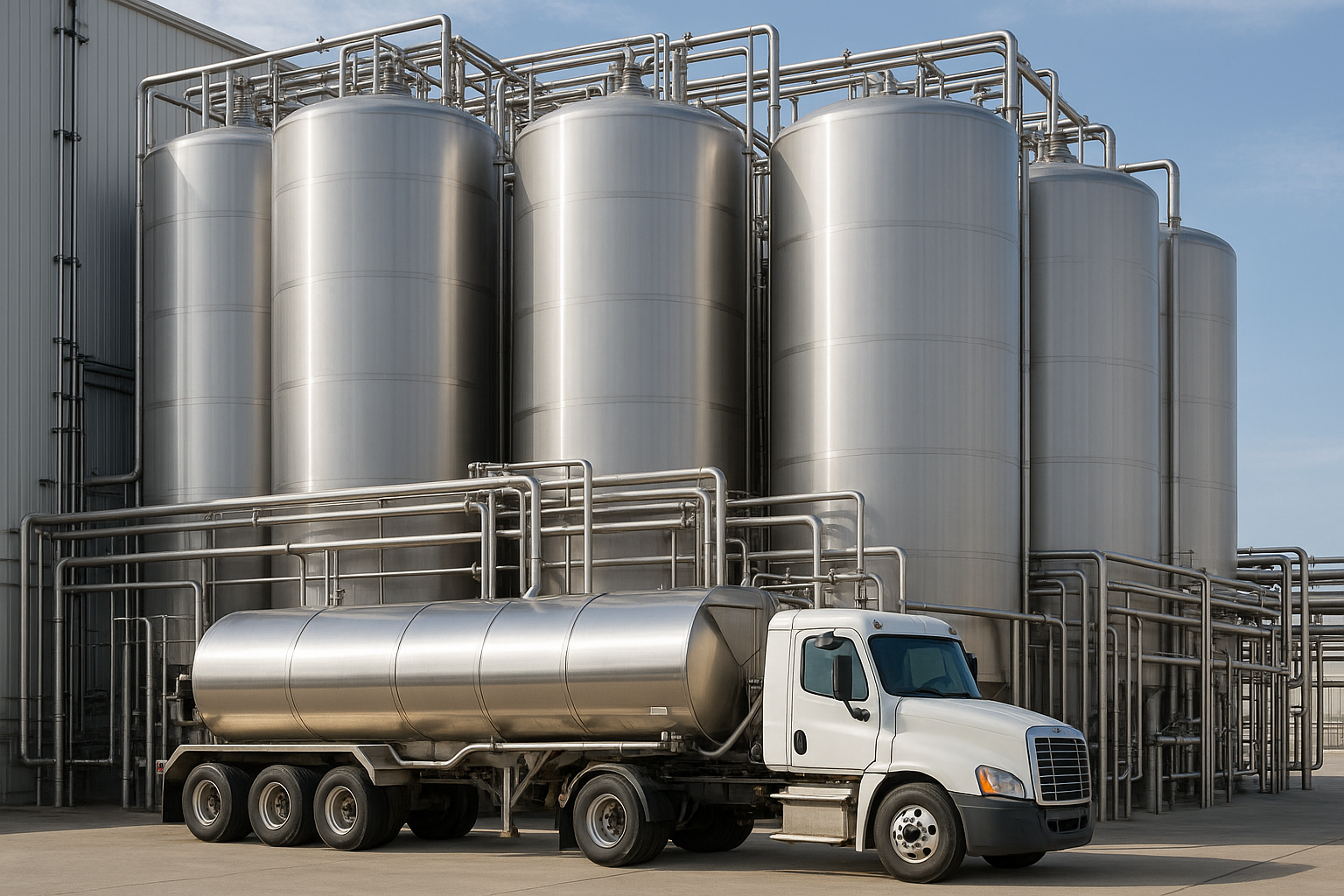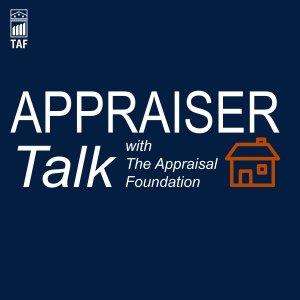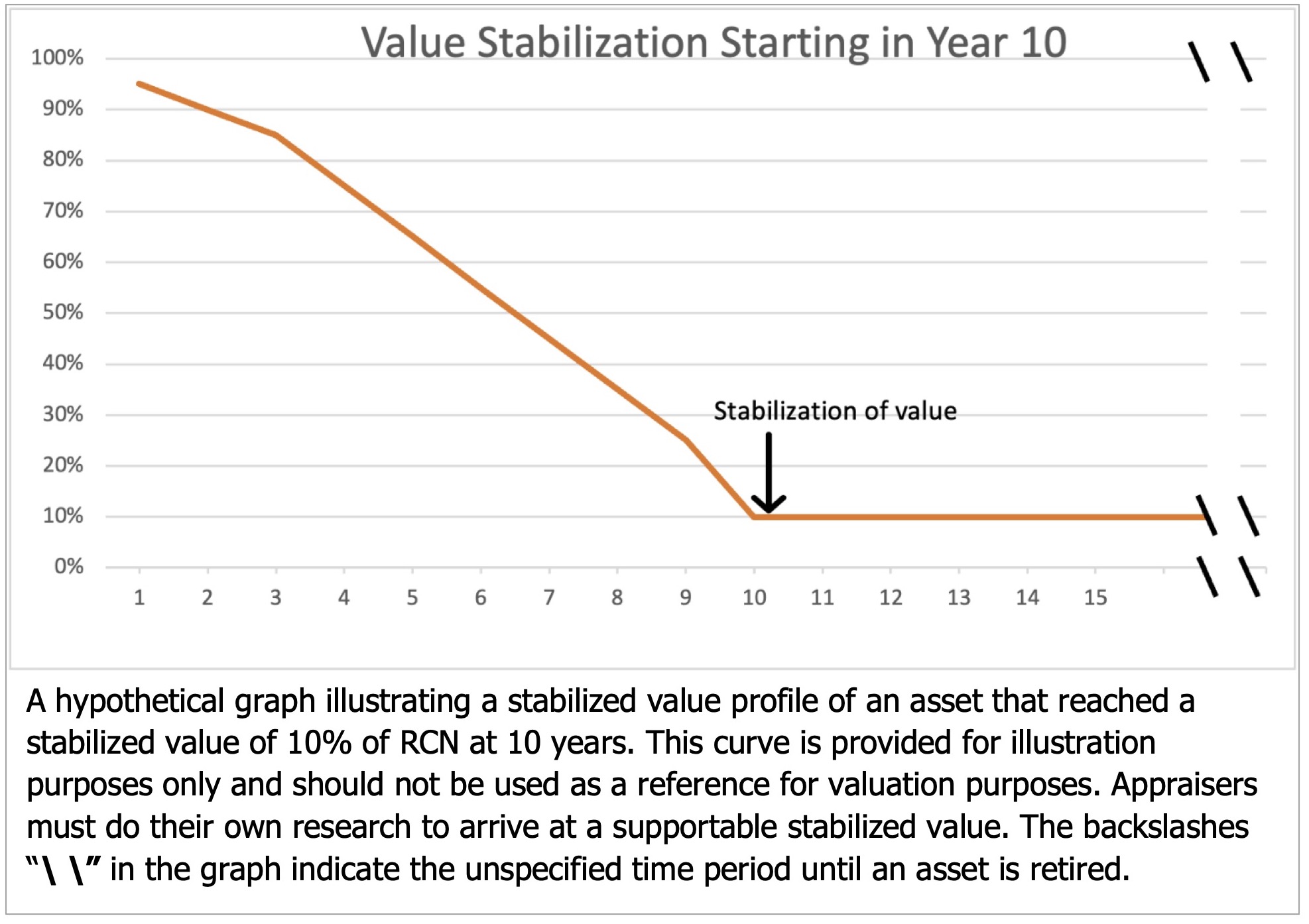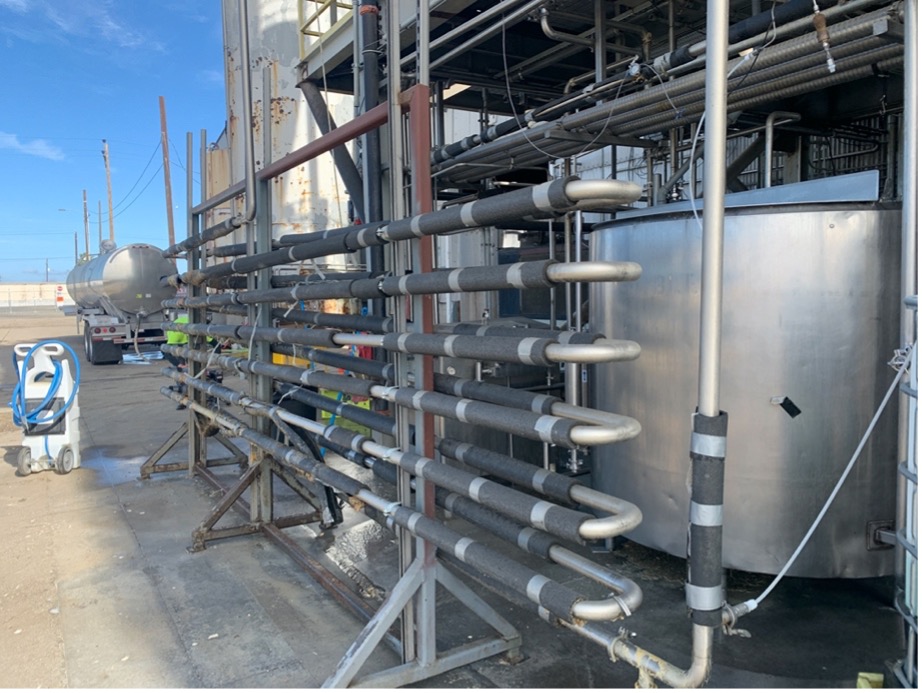![]() Calculating accurate deprecation for equipment values is critical; explaining how that depreciation was calculated is just as important, especially for litigation cases, property tax appeals or purchase price allocation situations. Equipment can lose value in any of the three standards areas: physical depreciation, functional obsolescence, and economic obsolescence. In some valuation situations, the loss of value is obvious. In other situations, the loss can be more oblique. To address this, one might reference the theory of remaining obsolescence factor (ROF) as discussed in the reference manual Valuing Machinery & Equipment: The Fundamentals of Appraising (3d edition, p. 80):
Calculating accurate deprecation for equipment values is critical; explaining how that depreciation was calculated is just as important, especially for litigation cases, property tax appeals or purchase price allocation situations. Equipment can lose value in any of the three standards areas: physical depreciation, functional obsolescence, and economic obsolescence. In some valuation situations, the loss of value is obvious. In other situations, the loss can be more oblique. To address this, one might reference the theory of remaining obsolescence factor (ROF) as discussed in the reference manual Valuing Machinery & Equipment: The Fundamentals of Appraising (3d edition, p. 80):
A remaining obsolescence factor (ROF) or an aggregate obsolescence factor can be quantified by comparison between the results obtained through the use of a cost indicator of value prior to the deduction for obsolescence and results obtained through the use of the sales comparison approach. This is a market derived obsolescence analysis.
I’ve discussed this analysis of market derived obsolescence with many appraisers over the years and one thing we all agree upon is that one factor in the analysis is what’s commonly called “discount for ownership.” It’s a clunky name for a very simple concept that everyone is familiar with: once you drive a car off the dealership lot, it’s no longer “new” and cannot be sold for the “new” price you just paid for it.
Edit (March 2020): The 4th edition of Valuing Machinery & Equipment: The Fundamentals of Appraising (2020) directly addressed the concept of “discount for ownership” on p. 76:
One such obsolescence factor is the discount for ownership. The discount for ownership is the loss in value of a property that occurs directly after a product is purchased, therefore going from a condition of “new” to that of “used” (although in some cases, the product might not even have been used; the fact that it is being sold by a secondary owner is sufficient for such a discount to apply, even if the product is still new and in its original condition). This discount is commonly seen in the depreciation of new cars. As soon as the buyer signs the purchase agreement and drives the new car off the lot, the car is subject to a loss in value. Estimates of this “pre-owned” discount for cars range from 11 to 40 percent, directly related to the fact that the car has gone from a condition of new to used.
Discount for Ownership: Remaining Obsolescence Factor
Guest blog by Dominic Piazza
I recently consulted with Dominic Piazza, CMEA, an equipment appraiser who’s also the director of sales at Machinery & Equipment Co., Inc, regarding an appraisal of food processing equipment for a property tax appeal and how the discount for ownership might be most appropriately applied in the context of the remaining obsolescence factor.
This post draws heavily on Dominic’s experience and knowledge and I appreciate him being willing to share it with our readers as a guest blog. I hope you appreciate the following discussion from Dominic of how discount for ownership affects equipment valuation.
Depreciation “Rule of Thumb”
When I started selling equipment 20+ years ago, the “rule of thumb” for the cost of used equipment in the market was 50% of new. That “rule of thumb” was often used across the board to factor values of used equipment. Things have changed.
In today’s market, half of new is may still be the cost for equipment that is at the top end and in like new condition, but late model, unused equipment rarely sells for as much as might be expected according to this dated “rule of thumb.”
Because that rule is no longer useful, many appraisers instead come up with values based on the “cost less depreciation” approach or tools such as a present worth table. While these tools are somewhat helpful, they most often do not come up with realistic values for late model equipment. The most accurate way to come up with fair market values are by finding actual sales that have occurred in the used equipment marketplace. These values can be used to reconcile any values calculated with other methods such as cost approach, indexes or even a general “rule of thumb.”
In researching the used equipment market, it might be helpful to understand the two big technological changes that are present day drivers in the used equipment market: the internet and computerized controllers. These factors not only made the 50% “rule of thumb” obsolete, but also demand that equipment values be reconciled to the market whenever possible.
Internet Used Equipment Market
The convenience and relative ease of locating used equipment through the Internet created a substantial change in the used equipment market. Prior to the internet market, used equipment dealers and auctioneers were able maintain constant pricing within the same range; the market prior to the rise of internet sales was mostly made up of reputable competitors. Equipment buyers were loyal to a select number of these sources. Those with surplus machinery to sell – end users, equipment brokers or any person working out of their garage – were mostly reliant on these dealers and auctioneers to dispose of that machinery.
The Internet, however, allows anyone with surplus equipment and a computer to market and sell used equipment. Simple supply and demand requires that used equipment dealers adjust their pricing structure in order to compete in today’s market.
Computerized Equipment Parts
Another factor is advancements in technology, which often make the computerized controllers and related parts of certain equipment obsolete prior to the typical life expectancy of the main piece of equipment. Since most manufacturers are looking for better control of their equipment, they often insist on updated controllers. These computerized parts are often tens of thousands of dollars and will take value away from the main equipment at a faster rate than was seen with older technology.
Traditional Equipment Market Factors
Two other traditional factors also play into the current market situation.
Customers looking to buy used equipment are often smaller companies with limited funds. As small companies have for decades, they will hunt and search for the best deal. In the current market, with its better exposure of used machinery, they can often gain leverage with pricing by having multiple items to consider.
The lack of services for used equipment is also nothing new. Used equipment sales have rarely included the services that can be included when buying from an OEM, such as installation, training, services, parts and warranties, although prior to internet markets, local dealers might have provided some of those services to their regular customers. Today, any used equipment dealers who do provide these services do so at a high cost and these additional costs cannot be attributed to the fair market value of the equipment. Basically, the lack of services negatively impacts the value of used equipment and is a considerable determining factor for equipment buyers.
Variability of Equipment Markets
These factors are not “across the board” for every piece of equipment. Some items carry more value than the norm. Some of these items include ribbon mixers, processing kettles, wine tanks, Sweco screens, Urschel dicers and more. These items will still need to be in excellent condition in order to sell at the higher end of pricing.
There are also some industries, such as the wine industry, where sales often realize 50% of new or more. One of the main reasons for this is an excellent industry network wherein equipment can be bought & sold directly to others in the same industry. Because these are private party sales, the used equipment dealers/brokers are removed from the equation, and therefore, higher percentages of new can be realized from the sale within their industry.
Discount for Ownership in the Internet Age
To summarize, the internet has completely refocused the used equipment market. With more sellers and more supply available than ever before, buyers have become more concerned about price and less concerned about dealer service. The end result is that when equipment goes from a status of new to used there’s now usually at least an 50% immediate drop in value. This discount for ownership is rarely less than 50% and can often be more; the actual percentage of course depends upon the type of used equipment.
More importantly, while this discount for ownership is automatically included when the appraiser uses the Sale Comparison approach, the appraiser using the Cost Approach must apply this factor as a remaining obsolescence factor (as discussed in the ASA’s Valuing Machinery and Equipment, p. 80) to arrive at credible assignment results:
A remaining obsolescence factor (ROF) or an aggregate obsolescence factor can be quantified by comparison between the results obtained through the use of a cost indicator of value prior to the deduction for obsolescence and results obtained through the use of the sales comparison approach. This is a market derived obsolescence analysis.
Dominic A. Piazza, CMEA
Director of Sales
Machinery & Equipment Co., Inc.




